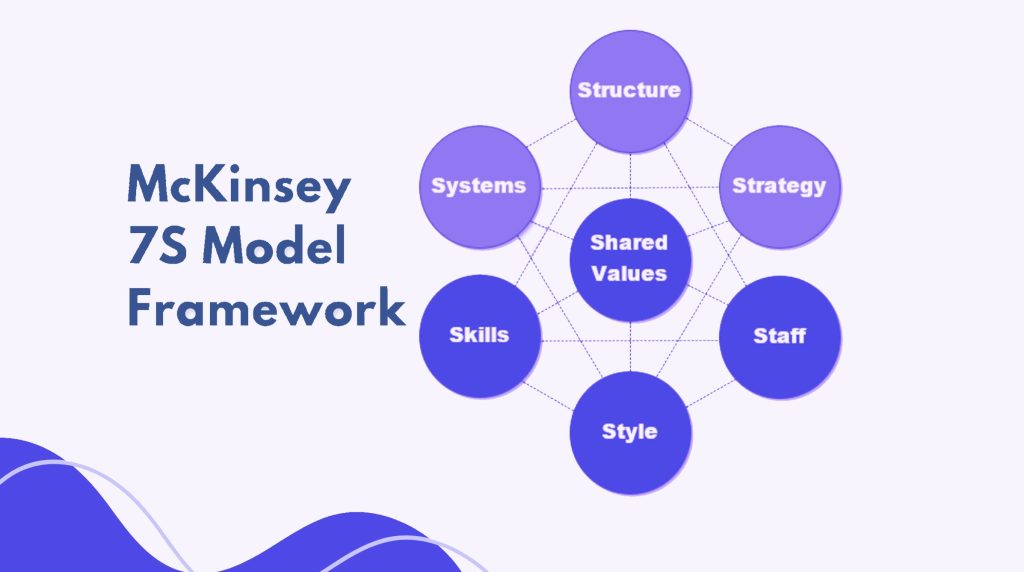
At its core, the McKinsey 7S Framework stresses the importance of aligning internal elements to achieve sustained success. It views the organization as an interconnected system, where changes in one area impact the others. This approach helps leaders assess how well the company’s strategy, structure, and culture support their goals and provides a roadmap for more effective change. By applying the framework, businesses can remain agile, adaptable, and better equipped to respond to external pressures with ease.
The Seven Elements of the McKinsey 7S Framework
The McKinsey 7S Framework is built on seven interconnected components that work together to drive organizational performance. These elements are divided into two categories: hard elements and soft elements. The hard elements—strategy, structure, and systems—are more tangible and easier to identify and manage. These represent the formal aspects of an organization, such as its operational processes, hierarchical structure, and strategic goals. For example, a company’s strategy outlines its long-term objectives, while its structure defines how teams and departments are organized.
On the other hand, the soft elements—shared values, skills, style, and staff—are more intangible but equally important. These factors shape the company’s culture, leadership style, and employee capabilities. For example, shared values represent the core beliefs and principles that guide the organization. They serve as the foundation for how employees interact with one another and how decisions are made. Similarly, skills refer to the organization’s competencies, both at the individual and collective levels, that allow it to deliver value to customers.
By ensuring alignment among these seven elements, organizations can create a more cohesive, adaptable, and effective system. This model highlights that businesses cannot operate in silos. Each part of the organization must complement the others to drive success. Therefore, applying this framework allows leaders to diagnose issues, identify misalignments, and implement targeted interventions to improve overall performance.
The Role of Strategy in the McKinsey 7S Framework
In the McKinsey 7S Framework, strategy is one of the core elements that guide an organization’s direction. Strategy refers to the long-term plan a company develops to achieve its goals, address market challenges, and capitalize on opportunities. Without a clear strategy, organizations lack the direction needed to align other critical areas like structure and systems. Therefore, understanding how strategy fits into the broader framework is essential for achieving a unified vision.
To ensure success, businesses must align their strategy with the other six elements of the McKinsey 7S Framework. For instance, if a company’s strategy focuses on innovation, its structure should encourage cross-functional collaboration, and its systems should support agile development processes. In this case, staff must also possess the skills necessary for driving innovation, and leadership must foster a culture that embraces risk-taking. By integrating strategy with the other elements of the framework, companies can improve their ability to execute their vision and remain competitive in fast-paced markets.
Achieving Structural Alignment
Structure, a key component of the McKinsey 7S Framework, defines the organizational hierarchy and how teams and departments arrange themselves. Structural alignment is crucial because it dictates how information flows throughout the organization and how leaders make decisions. If a company’s structure is misaligned with its strategy or systems, it can lead to inefficiencies, communication breakdowns, and slower decision-making.
The McKinsey 7S Framework encourages organizations to regularly evaluate whether their structure supports their strategic goals. For example, a company pursuing a growth strategy may need to adjust its structure to facilitate expansion into new markets. In this case, decentralizing decision-making might enable local managers to respond more effectively to market demands. Additionally, aligning structure with shared values, such as teamwork or transparency, can help reinforce a culture where employees feel empowered to collaborate and contribute to the organization’s success.
Leveraging Shared Values to Strengthen Organizational Culture
Shared values are at the heart of the McKinsey 7S Framework. These represent the fundamental beliefs and guiding principles that shape the organization’s culture. Shared values shape how employees behave, how they make decisions, and how the company engages with customers and stakeholders. Because they permeate every aspect of the business, shared values play a crucial role in driving alignment across the other six elements of the McKinsey 7S Framework.
For businesses to achieve alignment, their shared values must be consistent with their strategy, structure, and systems. For example, a company that values innovation must encourage creative thinking and risk-taking throughout the organization. Its leadership style should reflect these values, and its systems should reward employees who contribute to new ideas. When organizations deeply embed shared values, they create a culture that fosters long-term growth and adaptability.
The Importance of Systems in the McKinsey 7S Framework
Systems refer to the processes and tools that businesses use to manage their day-to-day operations. These include everything from financial reporting systems to performance management tools. In the McKinsey 7S Framework, systems are critical because they determine how efficiently a company operates and how well it can execute its strategy. If systems become outdated or don’t align with the company’s goals, they cause inefficiencies and lead to missed opportunities.
To optimize performance, organizations must integrate their systems with the other elements of the McKinsey 7S Framework effectively. For instance, a company that values customer satisfaction must have systems in place to monitor customer feedback and address issues quickly. Similarly, a business that emphasizes operational efficiency needs systems that streamline workflows and eliminate bottlenecks. When systems align with the company’s strategy and values, they can drive improved performance and create a competitive advantage.
The McKinsey 7S Framework is a versatile tool that provides a comprehensive approach to organizational alignment. By focusing on seven interconnected elements—strategy, structure, systems, shared values, skills, style, and staff—this framework helps companies create a cohesive and adaptive organization. Understanding the McKinsey 7S Framework is essential for leaders looking to optimize performance, drive growth, and maintain a competitive edge. Whether an organization is undergoing transformation or simply seeking to improve its internal alignment, the McKinsey 7S Framework offers valuable insights for achieving long-term success.

